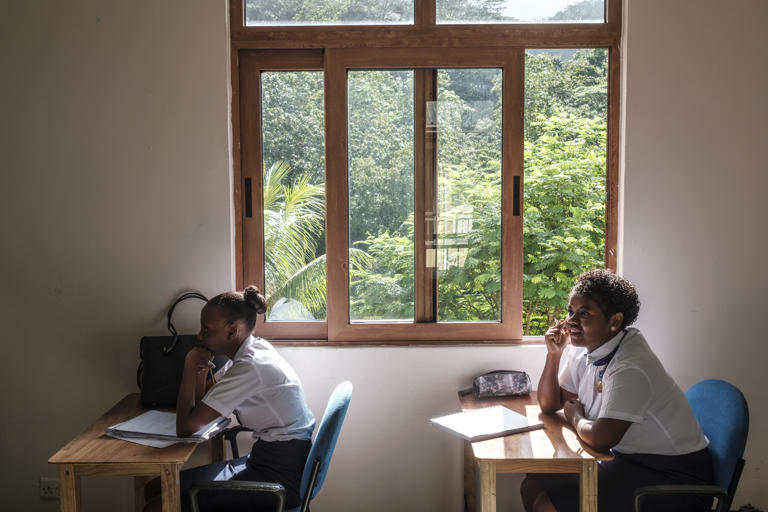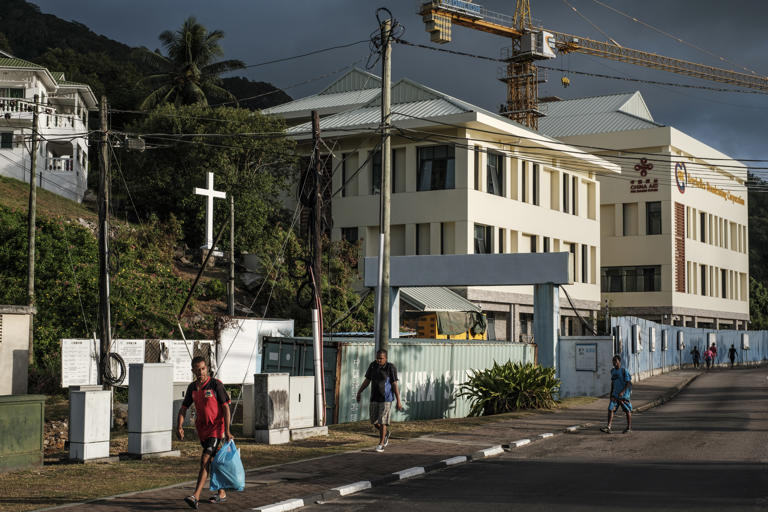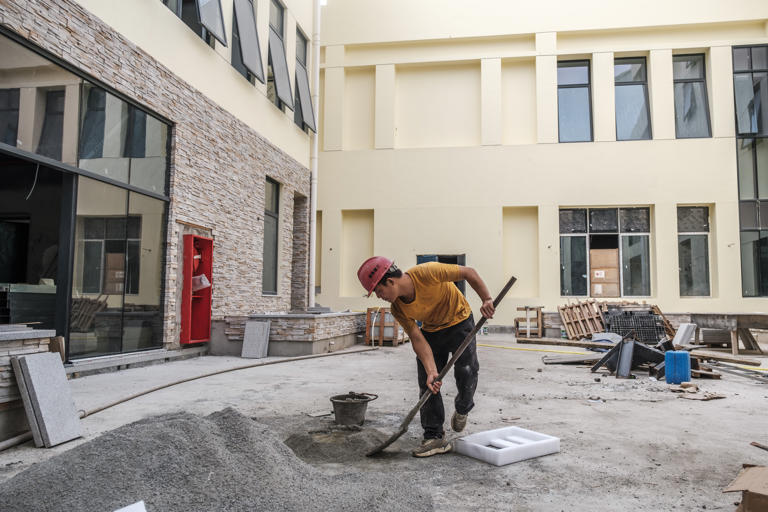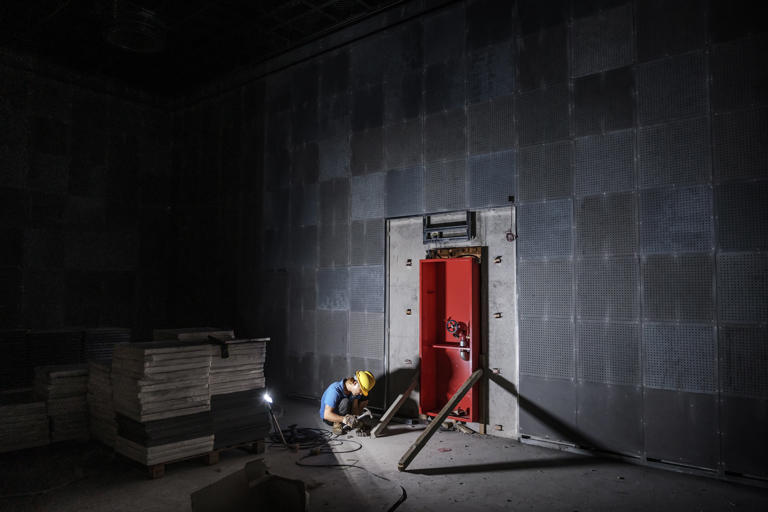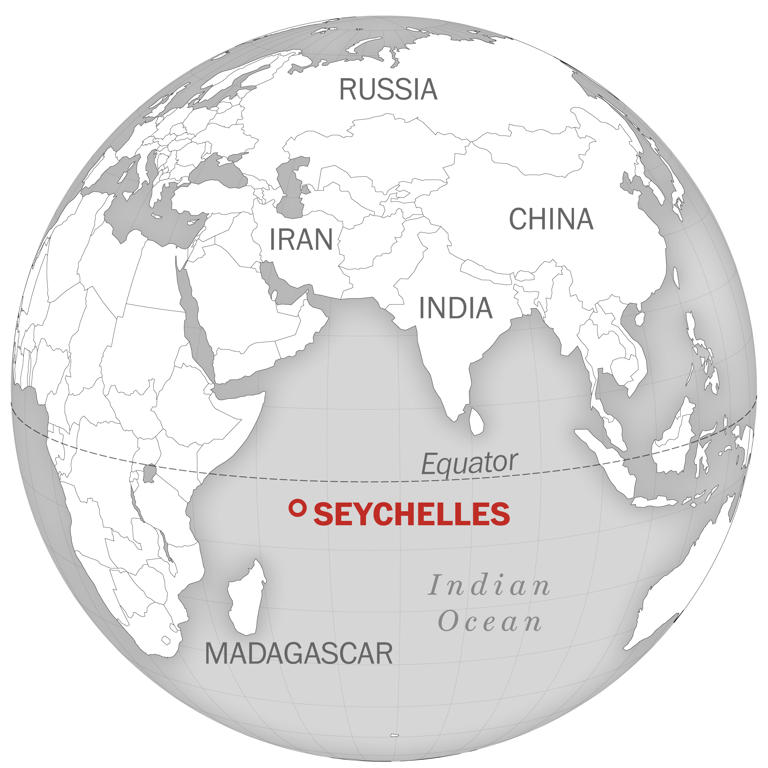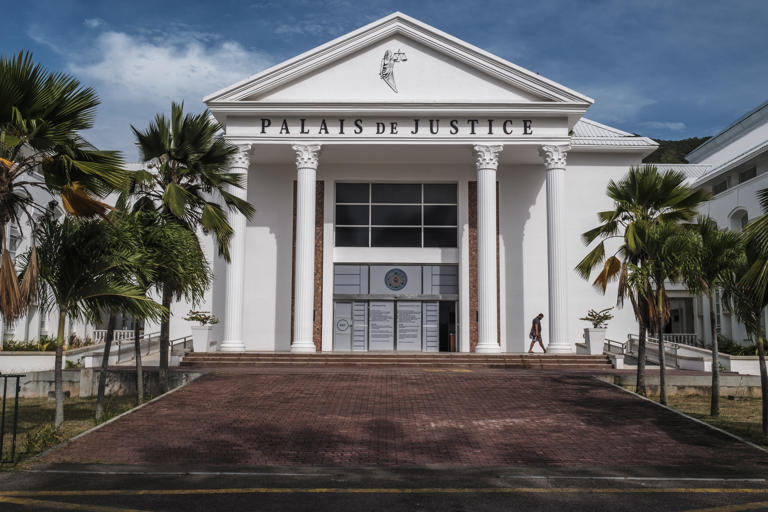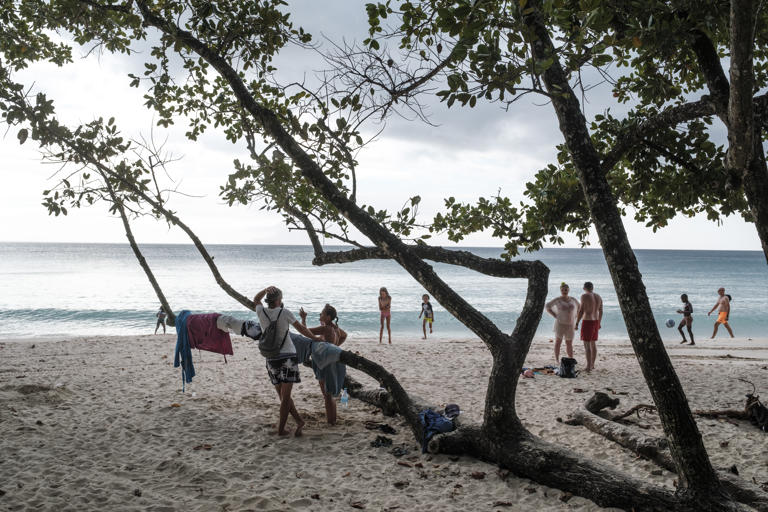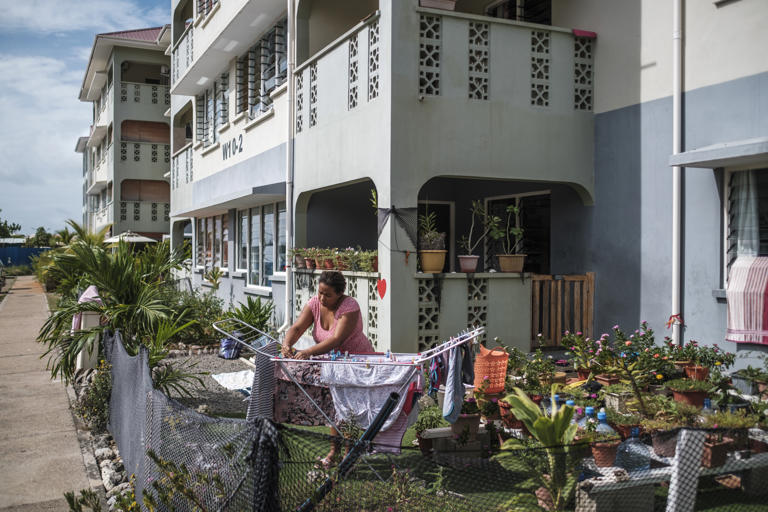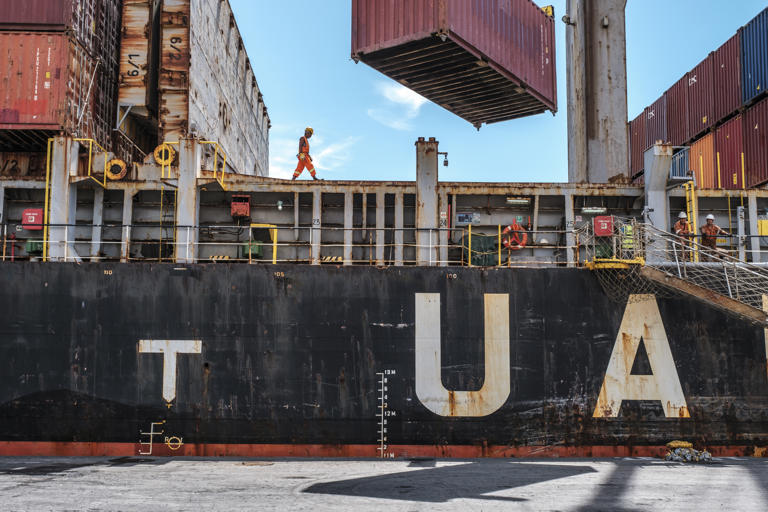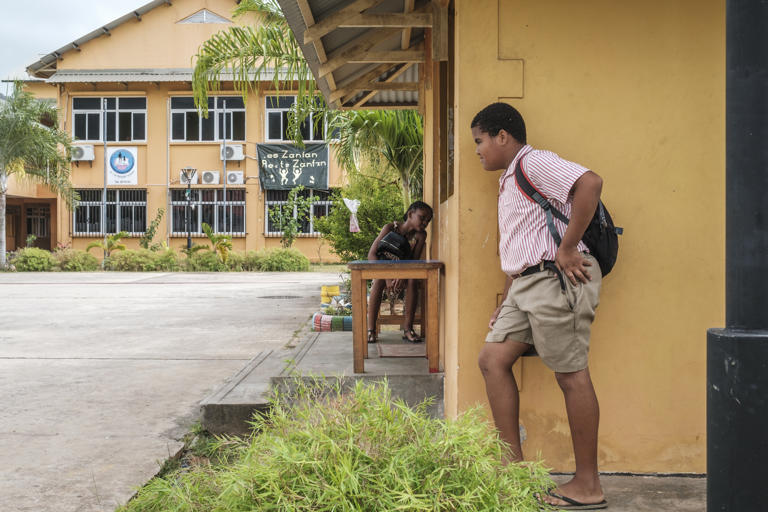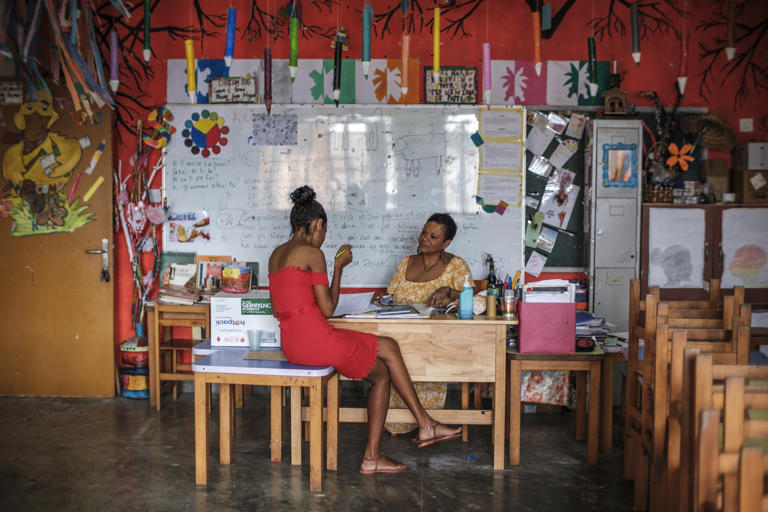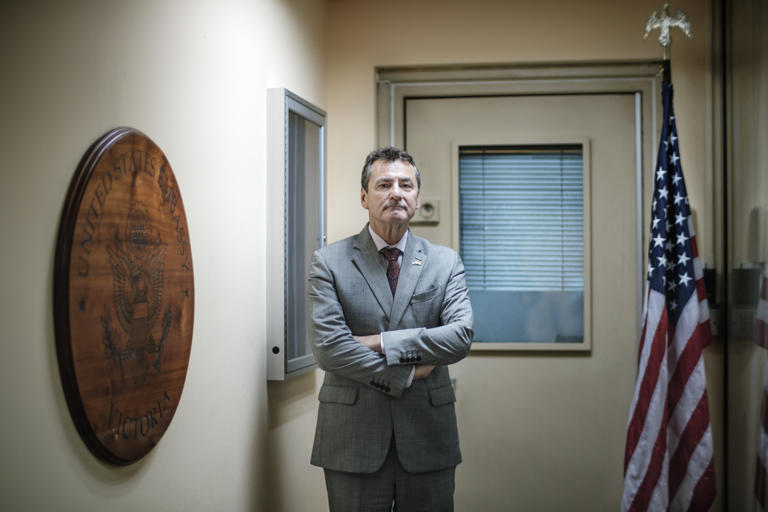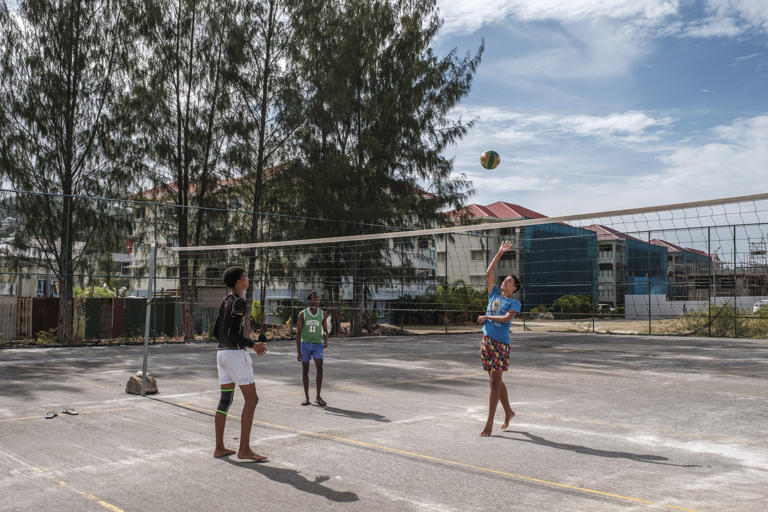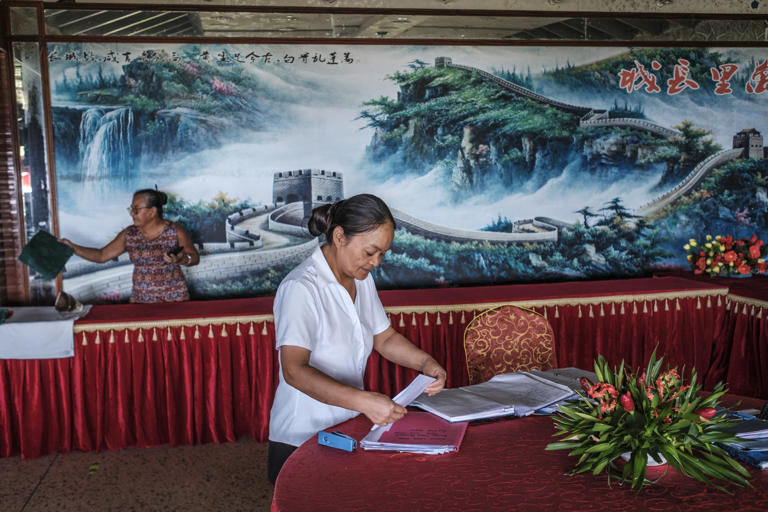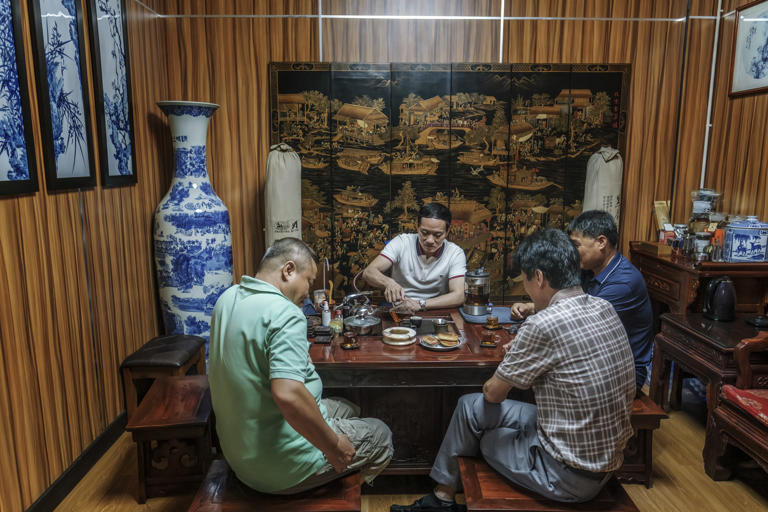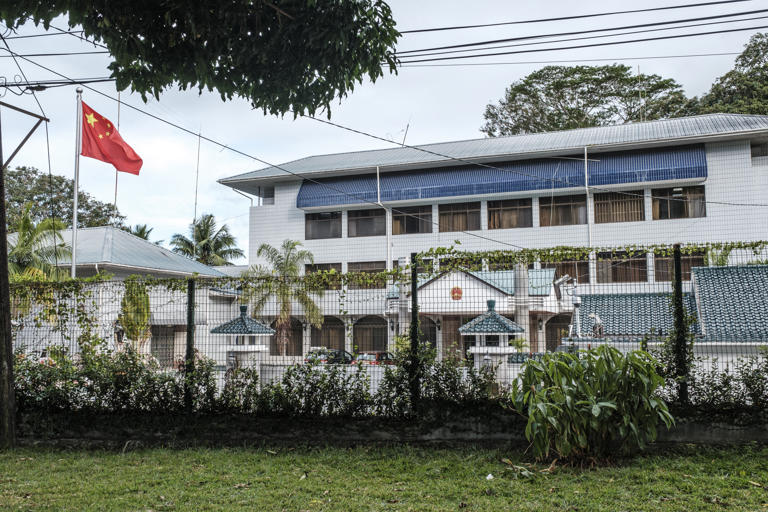In China’s shadow, U.S. rushes back to neglected Indian Ocean island
MAHE ISLAND, Seychelles — At the height of the Cold War, the U.S. Air Force tracking station that monitored Soviet satellites from this island’s soaring tropical forests was a focus of Seychelles life. The American servicemen and technicians living nearby hosted barbecues and bar nights to which all Seychellois were invited, distributed cookies and milk to local children and taught them basketball.
Then, the Cold War ended, the Soviet Union collapsed and in 1996 the Americans left, dismantling the tracking station and shutting down their embassy — citing budgetary reasons for abandoning what had seemingly become an irrelevant corner of the world.
Today, the compound where Americans and Seychellois partied is home to the Seychelles Tourism Academy, where young islanders training to be tour guides, hoteliers and masseuses take classes, among other subjects, in Chinese — just one small manifestation of a new geopolitical rivalry that has now lured the Americans back.
In June, Seychelles became the latest in a string of small nations around the world in which the United States has established, restored or is planning to open an embassy as part of a broad pushback against the influence China has acquired during more than two decades of neglect or disinterest on the part of the United States.
All are in small islands that had been judged insufficiently strategic by Washington to merit the cost of maintaining a diplomatic presence, including Seychelles, Tonga and the Solomon Islands, where embassies have been opened this year, and Maldives, Vanuatu and Kiribati, where embassies are planned, according to the State Department.
Seychelles offers an example of the ways America’s absence opened the door to Chinese influence. In the 27 years since the United States pulled out, China has built schools, hospitals, houses for low-income families and public amenities, winning sympathy among Seychellois who felt abandoned by the U.S. departure.
“They do the little things that America doesn’t do. This is where the Americans are weak. There is nothing we can say America built,” said Seychelles President Wavel Ramkalawan in an interview. “This is why countries like China have come in, because there was a vacuum.”
Seychelles officials say they are delighted to have the Americans back but also recognize that China is likely the main reason for the return, potentially pulling Seychelles into the big power rivalry.
“We cannot say we are naive. We do understand the competition going on. In the Cold War we had the United States and the Soviet Union and now it is the United States and China,” Seychelles Foreign Minister Sylvestre Radegonde said in an interview. “Someone woke up and realized how important it is to counter the Chinese influence.”
The United States now has ground to make up, he said. “When you are late at a party, the party starts without you, so you have to make up time. It’s a fact that China has been a long time here. They have a lot of sympathy.”
Most of the new embassies are in the Pacific, a strategic priority for China. The return to Seychelles underlines how the Indian Ocean is also emerging as an arena of competition between Washington and Beijing.
U.S. and China battle for influence in Pacific island nations
Bordered across a vast area by Africa, Australia, India and the Persian Gulf, the Indian Ocean is one of the world’s most strategically vital waterways, the transit point for 80 percent of global seaborne trade — which in turn accounts for more than 80 percent of all trade, according to the Carnegie Endowment’s Indian Ocean Initiative and the International Chamber of Shipping. Crucially, China relies on it for 80 percent of its energy supplies.
As Washington’s attention strayed, Beijing’s involvement in the region intensified. In 2017, China located its first overseas military facility in Djibouti, on the northwestern edge of the Indian Ocean. In a 2020 report, the Defense Department identified five Indian Ocean countries among a dozen locations where China has “likely” considered opening further bases, including Seychelles.
China is also the only country to have maintained diplomatic missions in all six of the Indian Ocean island nations that until recently were represented by three U.S. embassies, noted Darshana Baruah, who heads Carnegie’s Indian Ocean Initiative.
Top Chinese officials regularly visit — China’s President Hu Jintao called Seychelles “a shining pearl” during a stop in 2007, and Foreign Minister Wang Yi was here in 2021, describing Seychelles as “an important member of the big family of China-Africa solidarity and cooperation.”
When the new U.S. Embassy in Seychelles was launched in June, Richard Verma, the deputy secretary of state for management and resources, became the most senior U.S. government official to visit the nation since the 1990s.
Chinese officials like to note the contrast.
“Our foreign policy is to treat every country, big or small, as an equal,” said Mu Jianfeng, China’s charge d’affaires in Seychelles. “I don’t know why they closed and I don’t know why they opened,” he said of the Americans. “But if they think Seychelles is important they will have an embassy here.”
Doing the little things
Seychelles illustrates the kind of largesse China has lavished even on some of the world’s most remote countries. Best known as a tourist destination, its exquisite beaches draw mostly European tourists to its palm fringed shores and pristine coral reefs. Almost all of its 115 islands are uninhabited, and with a landmass of 175 miles and a population of around 100,000, it is Africa’s smallest nation.
But its position on the equator and at the easternmost gateway to the African continent gives it an outsize geopolitical significance. France and Britain contested the islands in the 19th century, the United States and the Soviet Union in the 20th — and now Seychelles is finding itself caught up again between competing powers.
At first glance, China appears to have no immediate stake in the country. There is a small Chinese community of around 1,000 that dates back to the 19th century. But Chinese visitors accounted for less than 1 percent of the island’s tourists over the past year, according to Seychellois figures, and even before the pandemic few came from China. Unusually for an African country, Seychelles does not count China among its top trading partners. Most of its goods are imported from the United Arab Emirates, South Africa and the European Union.
Related video: US support for the Philippines on South China Sea has been ‘just over the horizon’: Analyst (CNBC)
Loaded: 24.52%
 CNBC
CNBCYet over the past two decades China has become one of the nation’s most important benefactors, embarking on the kind of soft power outreaches that have become a hallmark of its efforts to win over populations across the Global South. There have been no grand infrastructure projects, such as the multimillion-dollar ports, railways and roads that have entrenched China’s hold over many developing countries, often entangling them in punishing debt. Beijing’s efforts here are low-cost but have outsize impact in a country so small, and they have mostly been offered as gifts.
Winning friends by training workers is China’s new gambit
China built the stately white-pillared National Assembly building where the democratically elected parliament meets, and the adjoining Supreme Court, both important symbols of the country’s identity as a nation. It’s in the process of completing a new headquarters for the state broadcasting company, which will more than double the network’s space.
Thousands of Seychellois live in housing built by China and made available at subsidized prices — a shortage of housing for the least well-off is identified by Seychelles officials as one of the country’s biggest social needs.
The Chinese have invited hundreds of Seychellois on visits and scholarships to China, and China’s Confucius Institute teaches Chinese classes in primary schools, the university, which China built in the 1980s, an adult education center in the capital and at the Seychelles Tourism Academy.
Ramkalawan, the president, stressed that he, along with many Seychellois, is delighted the United States has returned. The Seychelles has been pushing almost since the United States left for the embassy to come back, and “we’re happy it happened under our watch,” he said.
But now that the United States is back, the pressure is on to live up to expectations, he said.
“America has to shape up. Americans have to participate.”
Relishing the attention
So far, the return is going well, said James Donegan who relocated to the Seychelles to serve as U.S. charge d’affaires pending the appointment of a permanent ambassador. “All I can tell you is that I’m glad we’re back, the Seychellois are glad we’re back, and we’re going to look to the future,” he said.
He is busy scouting out larger premises to house the new embassy, currently located in a cramped, two-room office in downtown Victoria, the capital. China, by contrast, operates out of a spacious three-story villa-like structure with a driveway and a swimming pool — and multiple security cameras.
Maritime security is high on the U.S. agenda for its new relationship, Donegan said. In March, the United States held its first naval military exercise with France and Seychelles and more maritime cooperation is planned, to help Seychelles counter the challenges of piracy, drug smuggling and human trafficking that are identified as the island’s biggest external challenges.
U.S. officials say that countering China’s presence is not the only reason for the return. Although Seychelles has been a multiparty democracy for the past two decades, elections in 2020 brought an opposition party to power for the first time, and the United States wants to support what amounts to the country’s first democratic transition, they say.
“I’m not saying that there isn’t a concern about the Chinese presence and what the influences could be, what the implications could be strategically, but I would not want to narrow it down to a reductionist approach and say it’s purely a zero-sum matter of U.S.-China,” said Henry Jardine, who serves as the de facto current ambassador to Seychelles, based out of the U.S. Embassy in Mauritius; the U.S. Embassy in Mauritius has been responsible for Seychelles diplomacy since the pullout in 1996.
“We do see the relationship more broadly, but there are always these other questions about the strategic competition,” Jardine added.
Radegonde, the foreign minister, said there is little doubt China is a key motive. “The U.S. coming back cannot be because we are lovely people,” he said, adding “we are.”
Seychelles seems to relish the attention it is getting and hopes that it translates into more assistance from all the countries vying for influence, which include India, the United Arab Emirates and Russia as well as the United States and China, said Ramkalawan, the president.
It is also determined not to get drawn into any rivalries, he said. “It’s good if the U.S. sees us as pro-Western, the Chinese see us as friends, the Indians see us as worthwhile partners. It means we are keeping the principle of neutrality.”
Suspicion about motives
How much real influence China has acquired with its efforts in Seychelles is in question, some officials and analysts say.
From China’s perspective, the investments in Seychelles have been worthwhile if only because Seychelles can be consistently relied on to support Beijing’s one-China principle, which holds that the island of Taiwan is an inalienable part of China, said Mu, the charge d’affaires.
But Seychelles has voted with the United States on recent resolutions condemning Russia at the United Nations, noted Jardine. Chinese attempts to promote its own form of authoritarian government appear not to have dented Seychellois pride in their democracy. In 2011, the United States established a secret drone base at Seychelles airport to assist with counterterrorism operations in Somalia and Yemen. Talks the same year between China and Seychelles to build a Chinese naval facility in Seychelles fizzled.
“It might seem anomalous that they’ve put in so many resources that helped to build so many buildings they’ve done so much to try to gain influence but haven’t really seen it. You’d be hard pressed to see where that effort to buy or co-opt influence has been successful,” said Jardine.
“Could they be if they continue this very strong push? Potentially, and I think that’s one of the things were watching and concerned about,” he said.
The United States retains a powerful hold over the imaginations of ordinary people, something that remains a challenge for China’s quest for influence in a world where American movies, music and culture are ubiquitous. Most Seychellois speak English, one of three official languages in addition to French and Creole.
At the Tourism Academy where Americans once lived and partied, a group of students studying to become beauticians said they struggled to learn Chinese but enjoy the classes and are hoping more Chinese tourists visit. When asked which country they would prefer to visit, they rolled their eyes and said, “America.”
“When you say America, it’s the dream country,” explained their teacher, Hazel Radegonde.
But there are also questions about whether the United States return to the Seychelles will be enough to bring Seychelles fully on board. The abrupt departure in 1996 once the nation no longer served U.S. interests left Seychellois feeling they had been used, and their return now, at a time of heightened competition with a different rival, gives rise to suspicions they are being used again, many Seychellois say.
Lawyer Phillipe Boulle remembers the excitement stirred up by the arrival of the Americans in the early 1960s, on seaplanes, he recalled. They offered children rides on their helicopters and let them play with their walkie-talkies, a stunning innovation for a country that didn’t have an airport at the time. They became part of the island’s life, hosting parties, filling the nightclubs and meeting and marrying local women. He went to school with the sons of American servicemen then worked as a lawyer for the embassy.
“Everywhere you would go there would be Americans, and everyone wanted to befriend Americans,” he said.
But he shrugged when asked whether he’s happy the embassy has returned. “Things are different now,” he said, vaguely. “Everyone’s competing with everyone else. As Seychellois we don’t want any part of it. We don’t want to take sides.”
“The sole reason the Americans are here is because it’s seen as an opportunity to outmaneuver the Chinese,” said Ralph Volcere, who publishes the Seychelles Independent newsletter and says he’s glad the Americans are coming back. But he’s wary too, and suspicious of American motives. Closing the embassy damaged perceptions of the United States, and Washington will have to work hard to convince Seychellois that their motives are genuine, he said.
“The Chinese came to build schools and houses, and the Americans are coming for naval operations,” he said. “The Americans can’t just come here and put warships in the port and people will be happy.”
And what will happen if the rivalry with China is resolved? Will the Americans leave again? wondered Danny Faure, the former president who lost the 2020 elections to Ramkalawan. “With the United States it’s always based on how they respond to geopolitical concerns,” he said. “This shouldn’t be a flash in the pan. If you do value the relationship, the cost shouldn’t matter.”
His government had good relations with the Chinese, and he visited Beijing in 2018. He says China never asked anything in return for its largesse or sought to extract any concessions from Seychelles. “Genuinely over 40 years we have become great friends,” he said. “This won’t change whether the United States comes or goes.”


